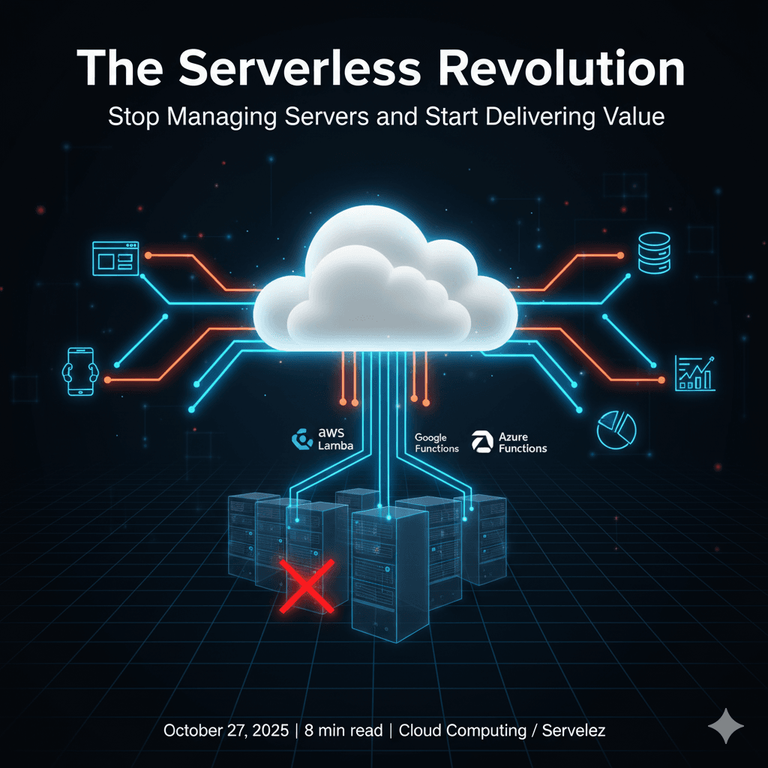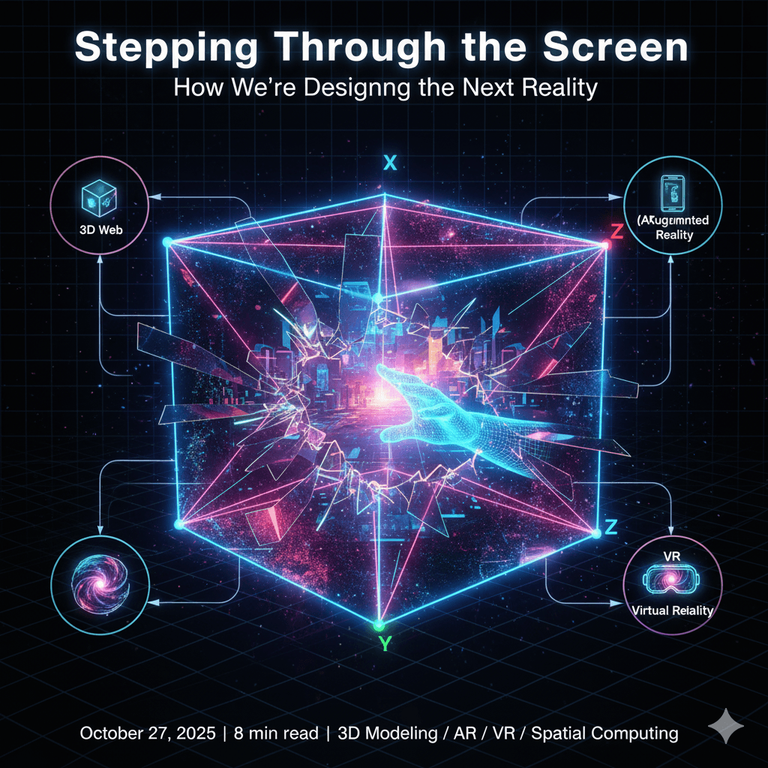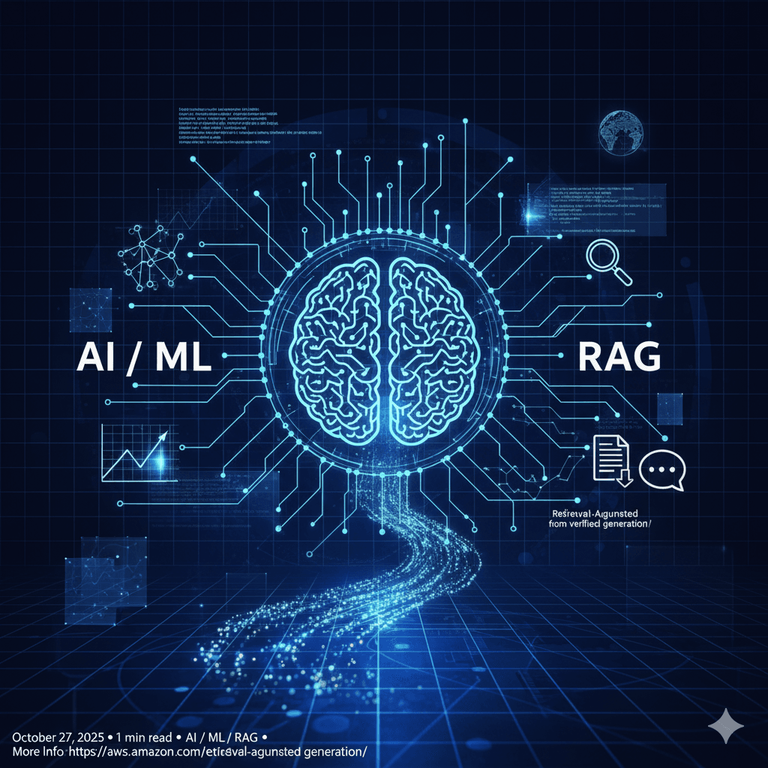From Racks to APIs: How the Cloud Rewrote the Rules of Infrastructure
Stop racking servers and start building empires. Discover how cloud infrastructure from AWS, Azure, and Google Cloud became the engine of modern innovation.

The End of the Server Room Era
If you’ve ever stood in a server room, you remember it—the sterile chill of the A/C, the rhythmic hum of fans, and the nervous glance at blinking green lights that you prayed wouldn’t turn red.
To launch an app in that world, you needed patience and caffeine. You’d order hardware, wait weeks for delivery, rack the servers, cable them, install the OS, configure the firewall, and hope nothing fried at 2 a.m. Scaling for traffic spikes meant frantic phone calls and manual patching. A single disk failure could take your entire product offline.
That world is gone. The cloud didn’t just change how we deploy software—it redefined who we are as technologists. We went from hardware wranglers to system architects.
The revolution was simple but profound: what if infrastructure were an API?
The Paradigm Shift: From Physical Boxes to Logical Resources
Cloud infrastructure is the invisible layer between your code and the bare-metal servers humming in far-off data centers. Companies like Amazon Web Services (AWS), Microsoft Azure, and Google Cloud Platform (GCP) turned compute, storage, and networking into programmable services available on demand.
Instead of buying a server -> make an API call.
Instead of wiring a disk -> you create a bucket.
Instead of scaling by hand -> you scale by logic.
This new model delivers three core superpowers:
- Speed: Spin up a global data center in minutes—not months.
- Elasticity: Automatically scale up during traffic surges and scale down when demand falls, paying only for what you use.
- Reach: Deploy applications in multiple regions worldwide, reducing latency and boosting reliability with a few clicks.
Infrastructure stopped being a sunk cost and became a creative canvas.
___
The Blueprint: Defining Infrastructure as Code (IaC)
The real unlock came when we stopped clicking around dashboards and started describing our infrastructure in code.
Infrastructure as Code (IaC) is the cornerstone of modern DevOps—a practice that lets you define your entire environment (networks, databases, servers, security policies) as declarative scripts. Tools like Terraform, Pulumi, and AWS CDK turn infrastructure into version-controlled, testable, repeatable code.
The Benefits of IaC
- Consistency: Every environment—dev, staging, prod—comes from the same source of truth.
- Repeatability: Tear down and rebuild your stack in minutes for DR or testing.
- Safety: Review changes in pull requests and preview impact before deployment.
___
A “Hello, Cloud” Example: Launching a Web Server with Terraform
Below is the cloud equivalent of “Hello, World”—a minimal Terraform configuration that creates a network and deploys a single EC2 instance on AWS:
# main.tf
# 1. Configure the AWS provider
provider "aws" {
region = "us-east-1"
}
# 2. Define our private cloud network (VPC)
resource "aws_vpc" "main" {
cidr_block = "10.0.0.0/16"
tags = {
Name = "production-vpc"
}
}
# 3. Create a public subnet
resource "aws_subnet" "public" {
vpc_id = aws_vpc.main.id
cidr_block = "10.0.1.0/24"
tags = {
Name = "production-public-subnet"
}
}
# 4. Launch a virtual web server
resource "aws_instance" "web_server" {
ami = "ami-0c55b159cbfafe1f0"
instance_type = "t2.micro"
subnet_id = aws_subnet.public.id
tags = {
Name = "production-web-server"
}
}Running terraform apply provisions everything automatically.
Running terraform destroy tears it all down.
No screwdriver required. 🪛
___
The Titans of the Cloud: AWS vs Azure vs GCP
While the fundamentals are universal, each cloud has its own philosophy:
AWS — The pioneer. Vastest catalog, unmatched community support, and integrations for every imaginable use case. The safe, default choice for startups and enterprises alike.
Azure — The enterprise native. Perfect for organizations already in Microsoft’s ecosystem, with first-class support for hybrid deployments, Windows Server, and Active Directory.
Google Cloud — The innovator. Built on the same infrastructure that powers Google Search and YouTube, GCP leads in data analytics, Kubernetes, and AI/ML performance.
Choosing a cloud today is less about capability and more about fit—cost model, developer workflow, compliance needs, and existing tech stack.
___
The Outcome: Scaling Innovation, Not Servers
Cloud infrastructure has democratized what used to be enterprise-only power. A startup of two can now build globally resilient, AI-powered products with the same elasticity and uptime once reserved for tech giants.
By abstracting away the racking, cabling, and maintenance, the cloud freed developers to focus on creativity and impact.
We no longer build data centers—we build empires of ideas.
___
Key Takeaways
- Infrastructure is now software. Treat it with the same rigor: version control, code review, and CI/CD.
- Automate everything. From deployment to scaling, automation is your true competitive edge.
- Design for failure. Assume components will fail, and build for resilience, not perfection.
- Keep learning. Cloud platforms evolve monthly—what’s “best practice” today may be deprecated tomorrow.
___
Final Thought
The cloud is no longer just a destination—it’s a philosophy. It represents the shift from owning infrastructure to orchestrating it.
From racks to APIs, we’ve crossed a threshold:
- The physical has become programmable
- And, innovation has never been so limitless.





